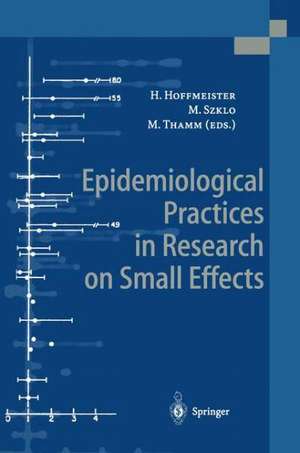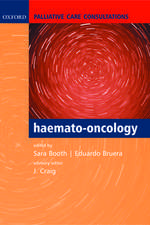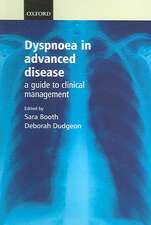Epidemiological Practices in Research on Small Effects
Editat de Hans Hoffmeister, Moyses Szklo, Michael Thammen Limba Engleză Paperback – 8 ian 2012
Preț: 707.50 lei
Preț vechi: 744.73 lei
-5% Nou
Puncte Express: 1061
Preț estimativ în valută:
135.38€ • 141.35$ • 112.04£
135.38€ • 141.35$ • 112.04£
Carte tipărită la comandă
Livrare economică 05-19 aprilie
Preluare comenzi: 021 569.72.76
Specificații
ISBN-13: 9783642804656
ISBN-10: 3642804659
Pagini: 144
Ilustrații: VIII, 134 p.
Dimensiuni: 155 x 235 x 8 mm
Greutate: 0.21 kg
Ediția:Softcover reprint of the original 1st ed. 1998
Editura: Springer Berlin, Heidelberg
Colecția Springer
Locul publicării:Berlin, Heidelberg, Germany
ISBN-10: 3642804659
Pagini: 144
Ilustrații: VIII, 134 p.
Dimensiuni: 155 x 235 x 8 mm
Greutate: 0.21 kg
Ediția:Softcover reprint of the original 1st ed. 1998
Editura: Springer Berlin, Heidelberg
Colecția Springer
Locul publicării:Berlin, Heidelberg, Germany
Public țintă
ResearchDescriere
Epidemiology faces its limits: the search for subtle links between diet, lifestyle, or environmental factors and disease is an unending source of fear - but often yields little certainty. Studies on weak associations - or small effects - often produce contradictory results which confuse the public. In this book, numerous contributions and illustrated examples show the effects of this problem, and sets out how future research should be approached in order to minimize the problems, thus producing clear results of significance.
Cuprins
Small effects as a main problem in epidemiology.- Obstacles in evaluating small effects.- Towards good epidemiological practices.- Problems in detecting small effects in case-control and cohort studies.- Proposals and recommendations concerning small effects in case-control and cohort studies.- Comments on problems with small effects in case-control and cohort studies.- Small effects and the selection of study participants in case-control and cohort studies.- Commentary on small effects and the selection of study participants in case-control and cohort studies.- Confounding: Its role in weak associations.- Commentary on confounding: Examples of its influence in weak associations.- Bias in observational studies.- Research strategies for assessing epidemiolgic associations, in relation to the distribution and measurement of exposures.- Commentary on “Bias in observational studies”.- Small effects: Subgroup analysis and interaction.- Enhancing small risks in epidemiologic studies.- Is meta-analysis a valid approach to the evaluation of small effects?.- Commentary on meta-analysis.- Discussion remarks on meta-analysis.- Publication bias.- Concluding remarks.
Textul de pe ultima copertă
In modern societies, epidemiology is increasingly confronted with the detection and evaluation of small risks, especially from environmental exposures and various lifestyles. The question arises, if for example, the risks from residential magnetic field exposure and childhood leukaemia, or dietry fat intake and breast cancer are real, or if they can safely be considered as artefacts, as a consequence of methodological limits of epidemiology? More and more conflicting results are produced and are putting the general public in a state of uncertainty, which, if public pressure is strong enough, might result in political action without the required sound scientific justification. Therefore, strategies have to be developed, to minimise the "noise" in epidemiological studies, in order to get a clearer picture of the real influencing factors, and to reduce the chance of false results. Based on an international conference on this topic, attended by some of the world's leading epidemiologists, this book is presenting an overview of the main difficulties researchers might encounter when studying small risks. It is also offering recommendations on how to proceed when small risks are under study in order to avoid spurious results.














